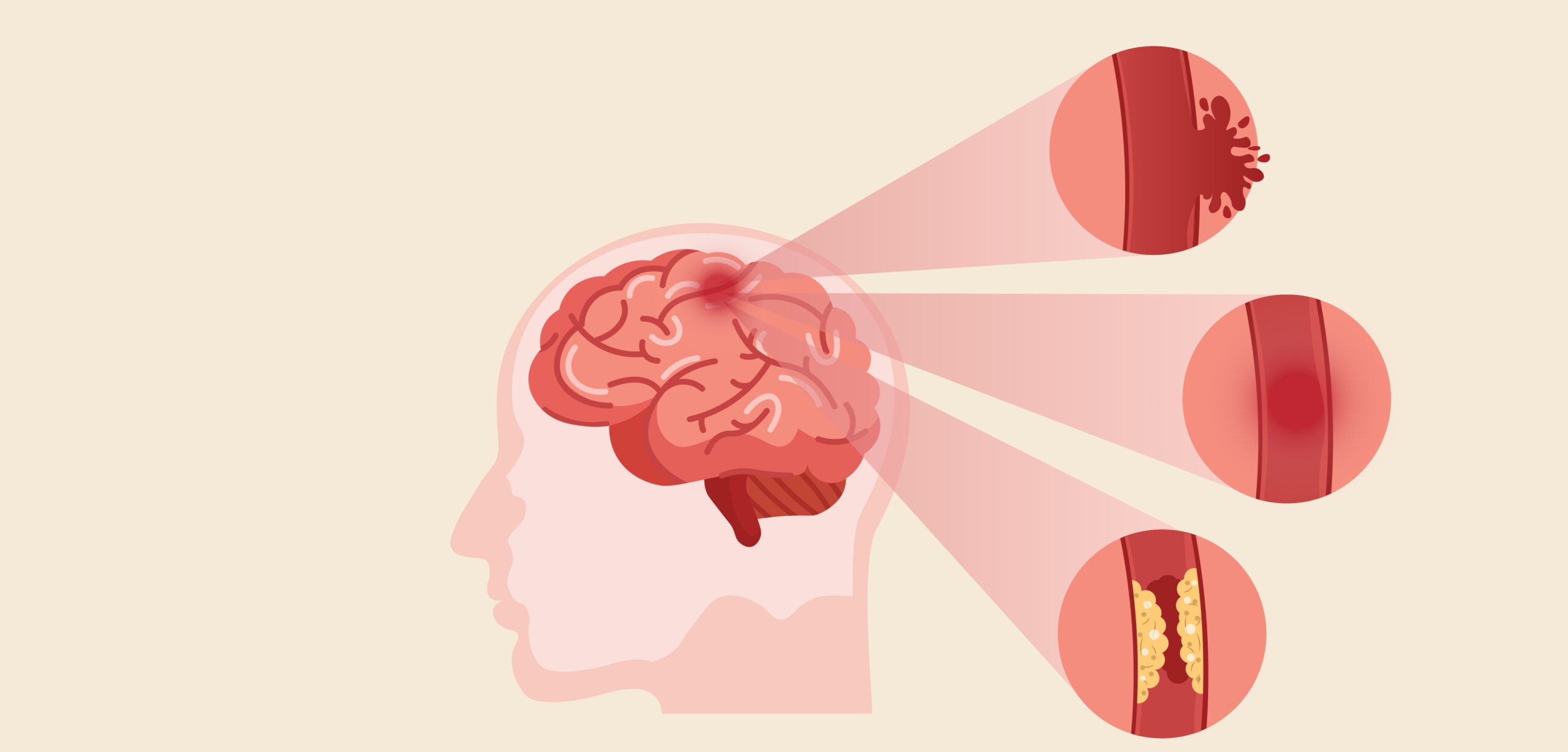
“I was in 9th grade when I returned from school one day only to be told that my grandfather had a stroke and was admitted to a nearby hospital,” Aleksandra Kumar Mishra, planning engineer from Noida recalls this incident from 2009. Medical examinations revealed that his grandfather had a haemorrhagic stroke. This condition occurs when a blood vessel in the brain ruptures. Soon after, the 64-year-old underwent surgery.
“Although the surgery was successful, his condition began to deteriorate within a week, and he slipped into a coma,” Mishra says. It took two months for his grandfather to regain consciousness; however, he had difficulty in walking, eating, and performing his daily tasks. Also, his memory began to wane.
“He survived the brain stroke, but he did not recognise us except my father,” Mishra reminisces. The doctors advised a healthy and stress-free lifestyle along with medications for better results.
Blocked blood vessels
“We tell people that it [stroke] is a blockage of the blood pipes in the brain,” Dr Harsha KJ, stroke specialist at the Brains-Brain Spine Hospital, Bengaluru, tells Happiest Health.
According to the World Stroke Organization, the lifetime risk of developing a stroke has increased by 50 per cent over the last 17 years due to unhealthy lifestyles, gender reasons and ageing. According to the organisation, stroke is currently the second most life-threatening condition globally.
Studies have shown that a stroke happens due to two reasons:
- When the brain gets less blood supply due to a clot lodged inside the brain’s blood arteries, it causes an ischemic stroke. Without oxygen and nutrients, brain cells begin to die within minutes. It is the most common type of brain stroke.
- Haemorrhagic strokes happen when a blood vessel ruptures inside the brain leading to internal bleeding followed by clotting, says Dr Harsha. The condition can soon turn fatal, he adds. Haemorrhagic strokes occur in 10-15 per cent of stroke cases. “Clot is present in both types of strokes, but when the clot comes out from the blood artery, it damages the brain differently,” Dr Harsha clarifies.
Read more: Study shows the link between blood group and risk of stroke
The cause of the clot
Studies show various reasons for the occurrence of a stroke. However, Dr Harsha says genes have a strong hand in making one susceptible to strokes. “If both parents have a history of stroke, then their children are at higher risk of getting it,” he says.
Other factors like age, atherosclerosis, small vessel disease, cardiac disease, hypertension, diabetes, and lifestyle factors like smoking and high-fat deposits due to unhealthy eating habits could trigger a stroke.
Often strokes happen suddenly, as seen in the case of a 32-year-old woman who visited Dr Harsha for a regular health check-up. She was seated comfortably, but suddenly lost muscle control. Her face froze on one side, and her speech slurred. “Since she was in the hospital premises, we could identify it as a stroke and operate on her quickly,” he says.
The red flags
Diagnosing stroke and its type from the symptoms is challenging because the symptoms depend on the part of the brain that has the clot as different regions of the brain determine specific functions of the body. For example, if the clot forms in the front part of the brain (cerebral cortex), the individual will experience symptoms related to coordination, speech, and behavioural changes.
Read more: Know the brain regions
Some stroke symptoms like headache, vomiting, drooping of mouth, blurred vision and numbness can overlap with other conditions such as seizures, diabetes, and cardiovascular disorders, says Dr Harsha.
A FAST route for early diagnosis
Early intervention is paramount to getting quicker relief for any condition. However, in the case of a stroke, the recovery and treatment entirely depend on how fast the diagnosis is made. Owing to the symptoms being similar to other health conditions, the World Stroke Organization launched the FAST campaign to identify a stroke quickly.
F: Face. Observe changes like drooping or numbness on one side of the face versus the other. Ask the person to smile to make the droop more apparent.
A: Arms. Observe the movement of arms in case of brain stroke. Ask the individual to raise both arms simultaneously and hold them for a count of ten. If one arm starts to drop quickly, this could be a sign of a stroke.
S: Stability. Individuals who experience a stroke fall easily and cannot stand without help.
T: Talking. During a stroke, the individual cannot speak properly, and their speech may be garbled or slurred. Ask the person to repeat simple words like blue.
Ms Kannu, 31-year-old science teacher based in Jaipur, says, “Early diagnosis helped with my mother’s treatment and recovery from the complications that occurred later.” Her mother had sudden breathing troubles, which they initially thought to be gastric troubles. However, her blood pressure rose the following day, and her face drooped. Soon her right side was paralysed. The diagnosis revealed Kannu’s mother had an ischemic stroke.
The neurologist immediately prescribed medications to dissolve the clot inside the artery and monitored her blood pressure.
A similar quick diagnosis helped the 32-year-old woman get immediate medical attention. An MRI and a few blood tests confirmed she had a stroke, recalls Dr Harsha.
Read more: This headband detects the onset of stroke in minutes
Roadmap to recovery
Catching the symptoms early determines the appropriate treatment measures.
Along with medications, Kannu’s mother underwent physiotherapy and lifestyle changes. “My mom recovered quickly and was able to return to her daily household routine without assistance,” adds Kannu.
Mishra agrees with the efficacy of physiotherapy and lifestyle changes for recovery from a stroke. “Changes to my grandfather’s lifestyle helped him recover better,” he says.

















